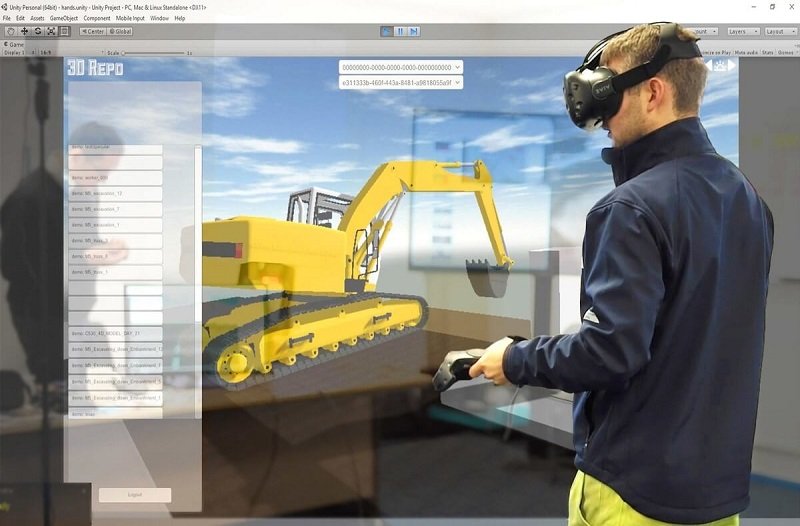Technological innovations have revolutionized industries across the globe. Internet of things, smart devices, automation, and artificial intelligence are ubiquitous in industries and daily use gadgets. The pace of technological advancement is unprecedented. The construction sector is also incorporating modern innovations to meet the demands of the modern era.
The construction sector is considered to be the most resistant to change because of its innate job execution strategies. Repetition of tasks and lack of innovation kept this sector traditional but things are changing now. Construction Jobsite schemes, planning, schedules, general contractor drawings and other necessary components of any construction project are now designed and planned in a different way as compared to ten years ago. Building Information Modeling, project planning software and cloud-based platforms have transformed the construction industry. Days of construction job site delays, design changes, and poor coordination are gone.
The new technology that is rapidly making its way into the construction industry is the use of Augmented and Virtual Reality (AR/VR). Before explaining their role and future prospects we must define the terms for better understanding.
Augmented Reality: It refers to the view of an actual scenario where elements are “augmented” by computer extracted real-world input such as graphics, sound, video or GPS Data. In this system, responsive imagery is layered on top of the real world view.
Virtual Reality: It refers to the simulated environment generated by computer technologies. The viewer will be placed inside the environment with the help of headsets and goggles. Viewers can be enabled to interact with objects and 3D models with the help of controls and sensors.
Augmented reality has been used in the gaming industry for years and recently making an impact in the construction industry as well. The expected evaluation of this market by the end of 2020 is $90 Billion. The use of AR/VR technology will be enriching the interaction of humans and machines coupled with replacing humans at some point. Given the fact that this technology will mature with time and become a valuable tool for engineers, architects, project managers, and service providers.

How it Works
- The 3D model is created and combine with all building data
- User use goggles or AR device that orients to the concerned point
- Data is displayed digitally over the viewer’s physical surroundings in real-time
Talking about the benefits of the use of AR/VR in construction, there are many in a different dimension from design to visualization and execution to facility management.
Benefits
There are numerous benefits of VR/AD adoption in projects. It can give provide workers the first-hand experience of the Jobsite even before the actual work starts. Furthermore, it can reduce the chances of accidents during the excavation by controlling the machine from a safe and comfortable environment. Safety is another major concern on any construction Jobsite. It can cause an enormous cost to the company in case of any unfortunate incident. Cranes and boom lift operators and construction worker’s safety training can be conducted with the help of this AR/VR. Many companies have used it’s potential and observed improvement. Complex design coordination errors, missing elements, and clash detection can be done conveniently and efficiently with the help of AR/VR technology. Given the benefits of this technology, there will be fewer change orders which is a major cause in project delays. Organizational project delivery can be improved remarkably with the development of this eco-system as the design and site office will be able to communicate and work hand-in-hand with the use of helmets, mobile apps, and smart devices. The overall precision of the work can enhance organizational confidence, efficiency, client relationship and a higher rate of return on investment. Data interpretability between BIM and VR/VR platforms can increase its footprint industry. Facility management is another important area in which this technology can play a role. Before handing over the project with the help of laser scanning it is easy to record every square inch of the project. This can help the facility managers and others to not only validate the design but also to manage it over its life cycle.
Limitations of AR/VR
As explained earlier the technology is evolving and we can’t say it’s perfect. There is always room for improvement. The types of equipment are susceptible to adverse weather conditions and need a stable internet connection to operate. The major hurdles with the adoption of this technology in the construction sector are the scarcity of trained professionals, the cost of equipment and the absence of eco-system within the organization to adopt this technology in their project delivery system.
Many apps are there that are helping the professionals to perform different tasks. Apps like SmartReality, Pair3D, and sensopia are the common ones. The signs are positive, and it seems that the future is not far when AR/VR will be the common feature in every project in the construction sector.
Author: Muhammad Shoaib
Muhammad Shoaib is Sustainability and Project Management Consultant. He holds LEED AP, WELL Faculty credentials. He is also a Collaborative Facilitator of ILFI in Pakistan and ex-UN-SDSN Pathway Fellow. He holds LEED AP, WELL Faculty, and Building performance Analyst Credentials. He can be contacted @ Linkedin or email: [email protected]
 Constructionshows
Constructionshows
